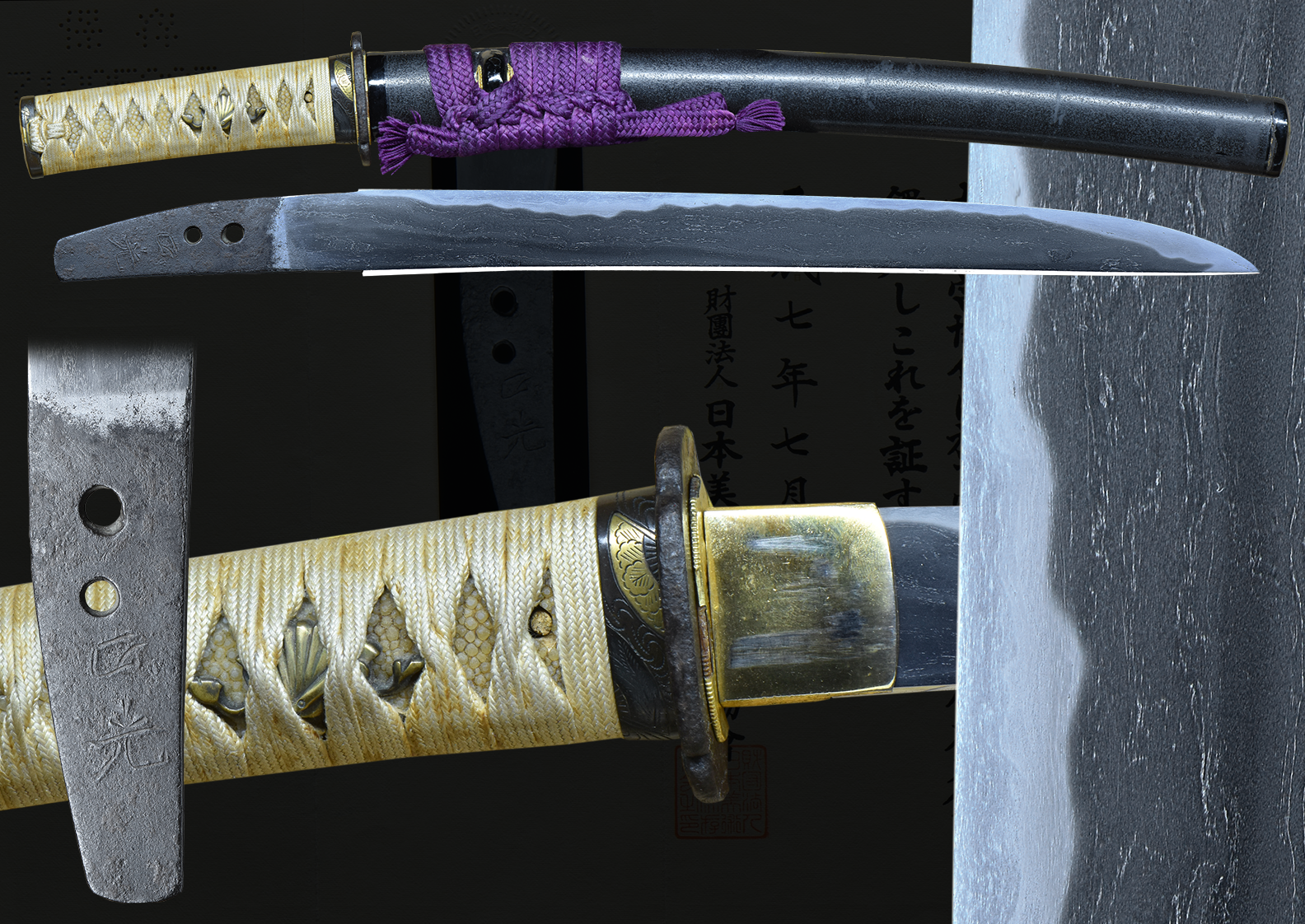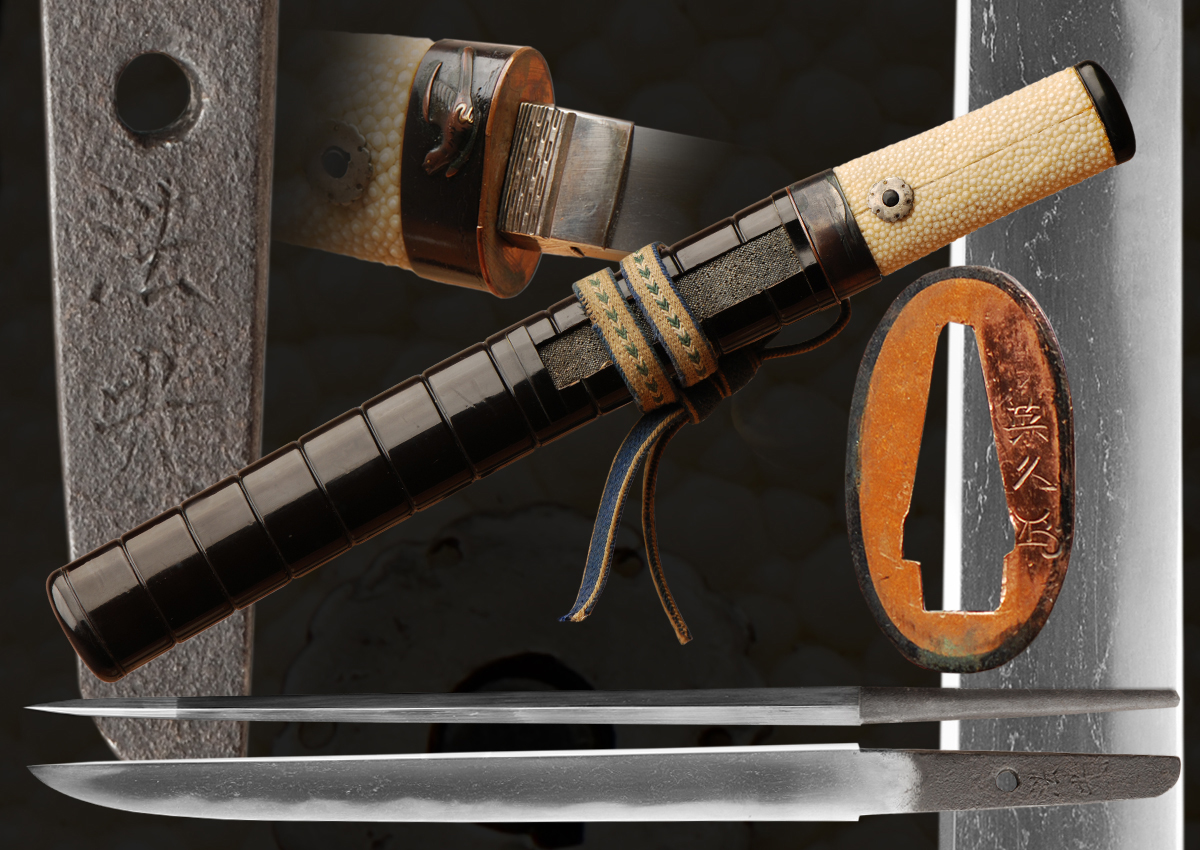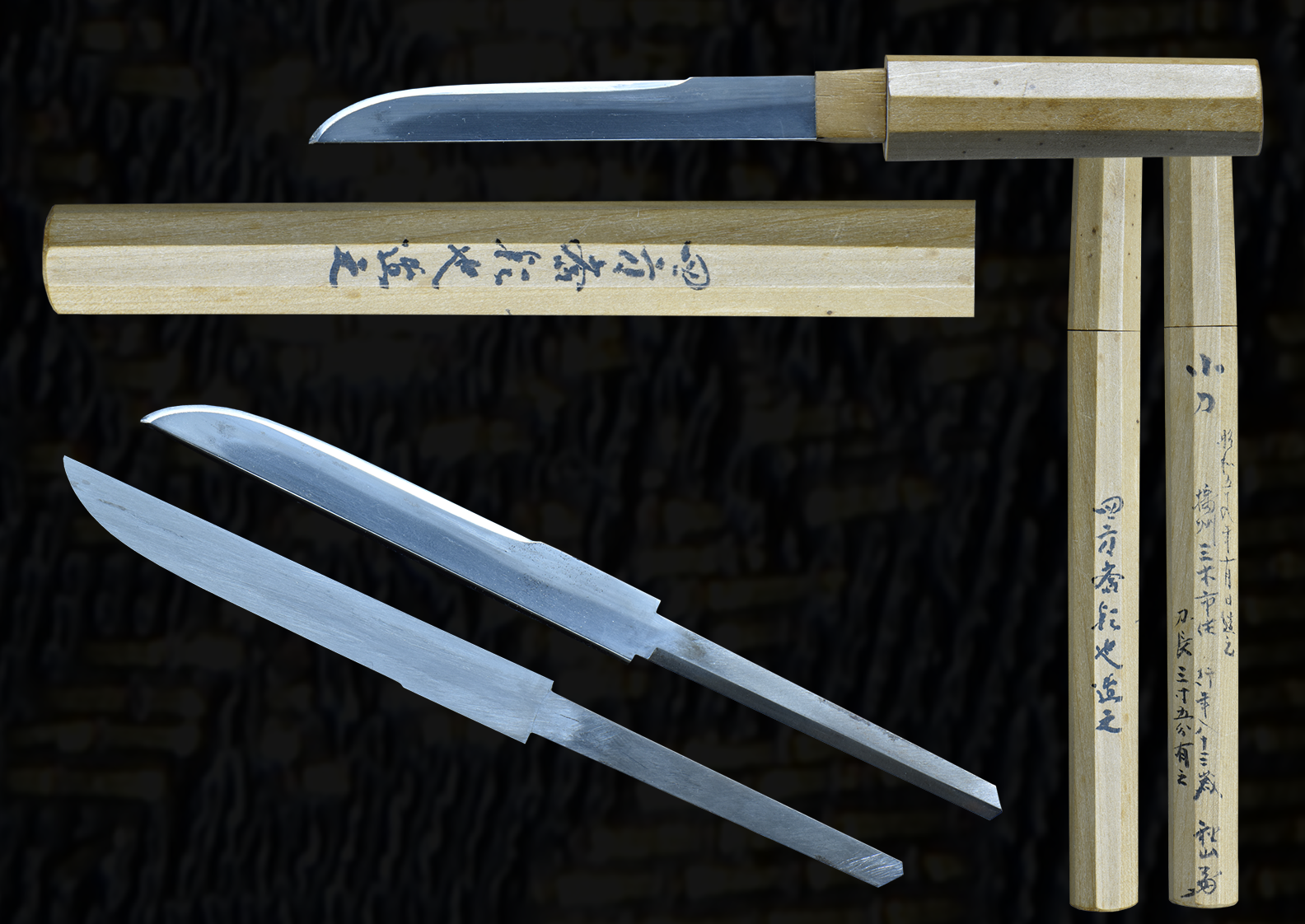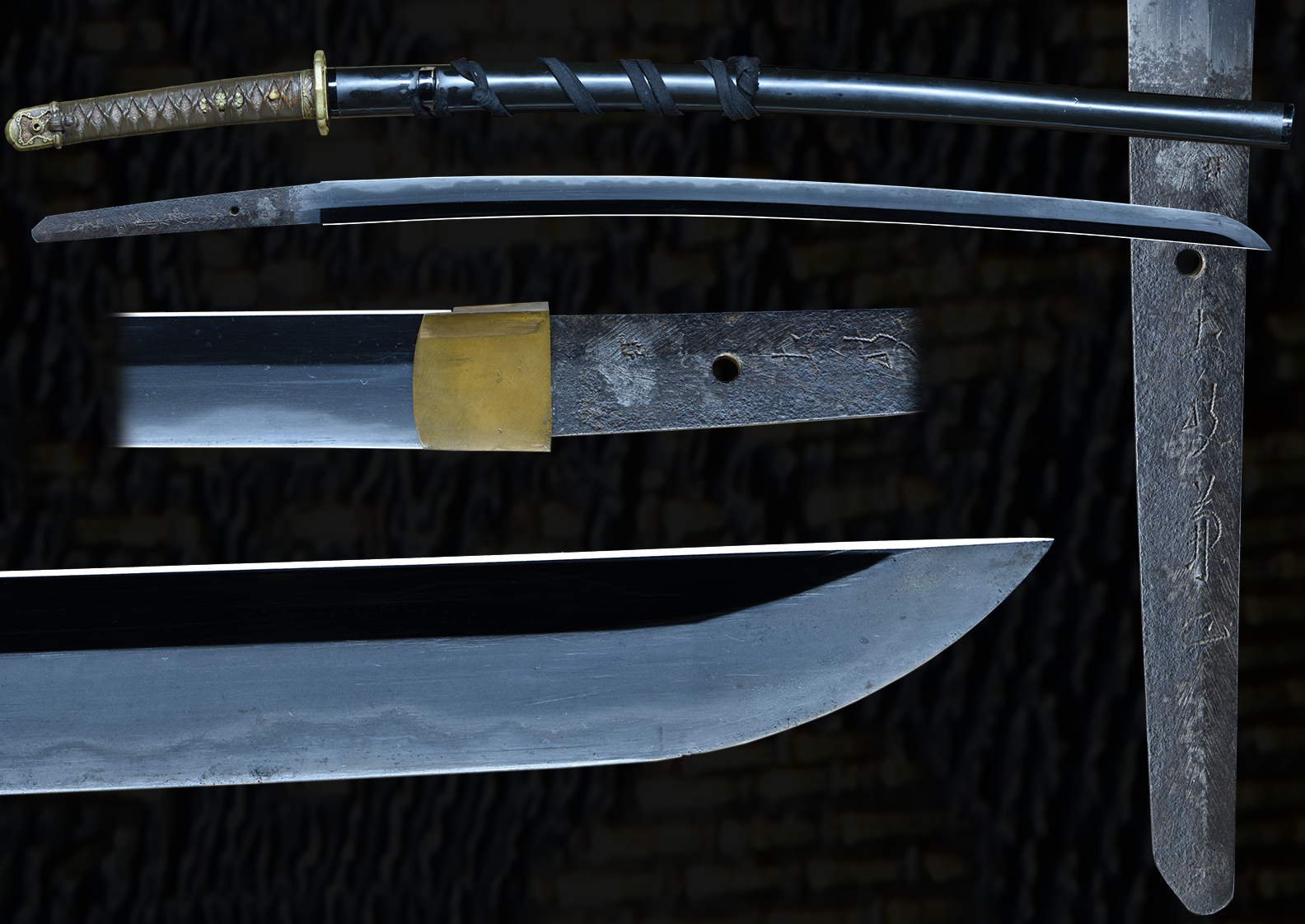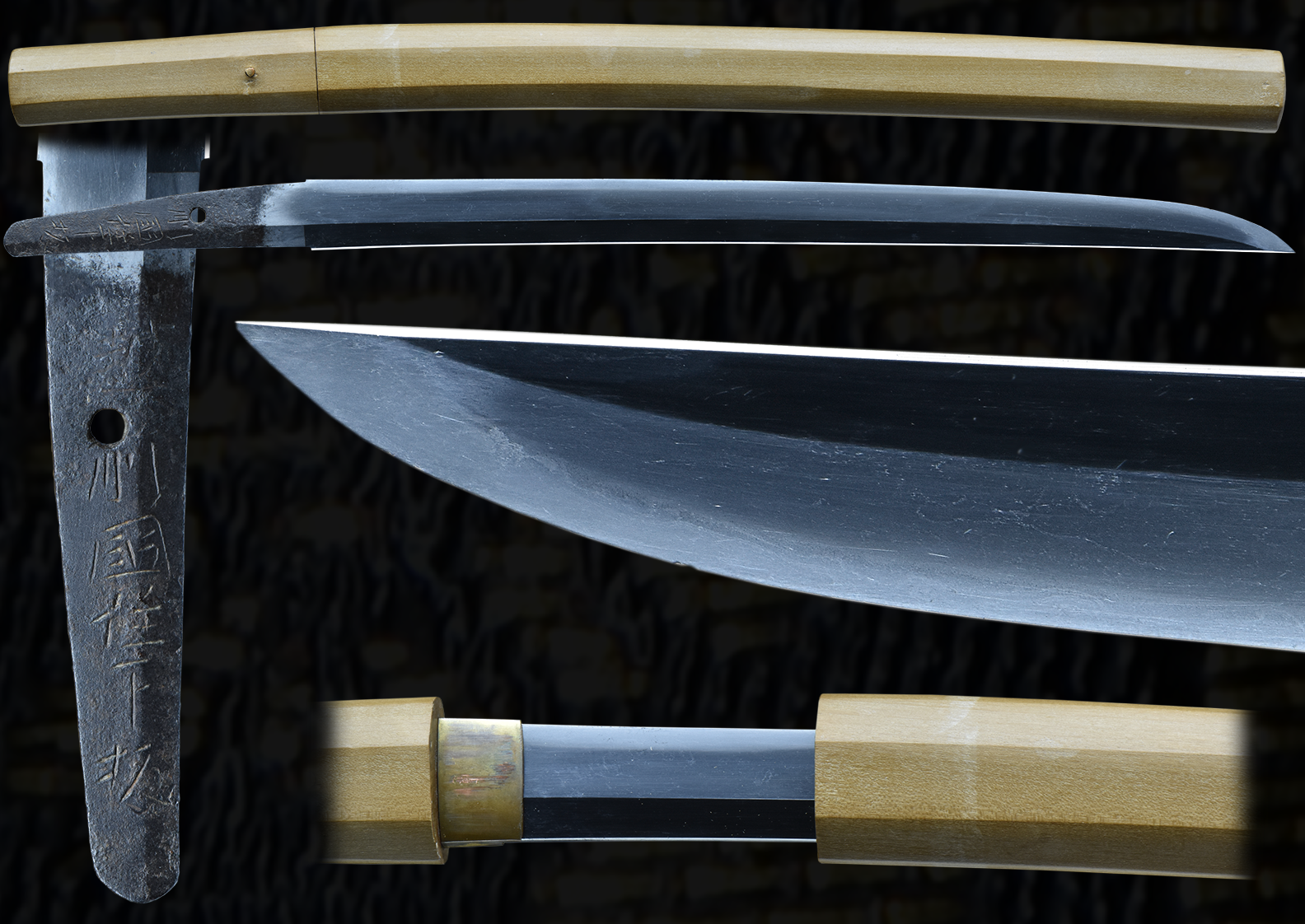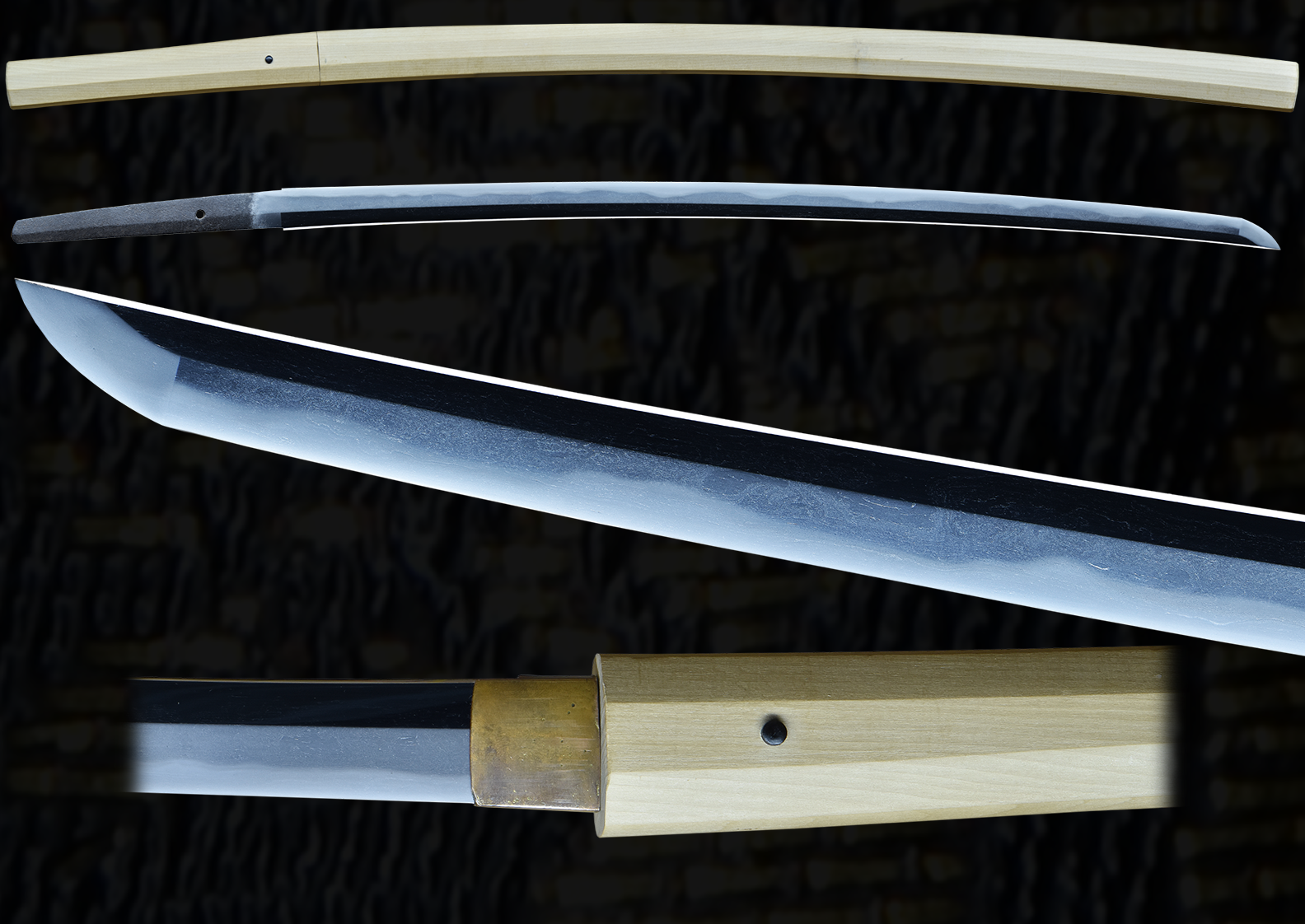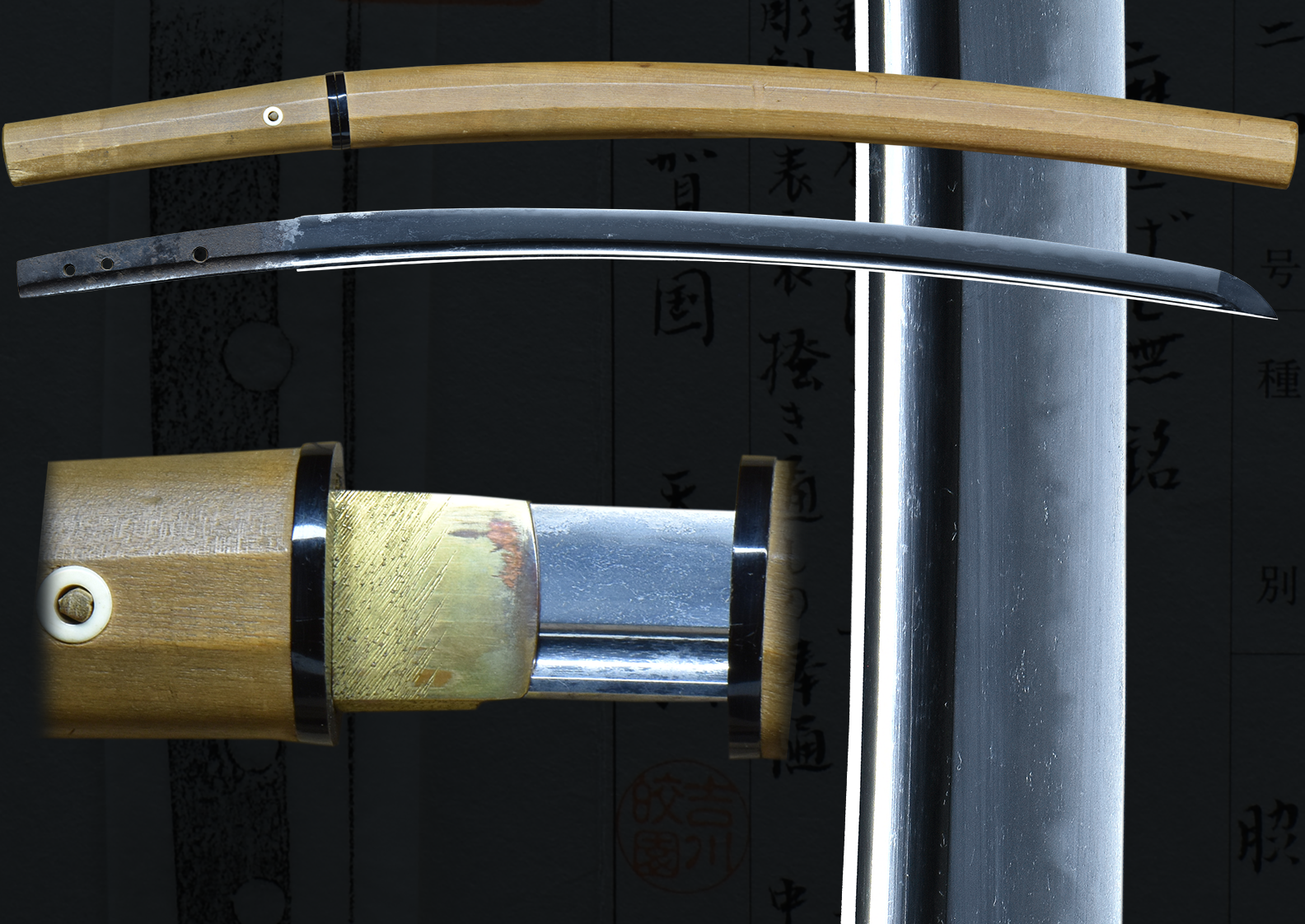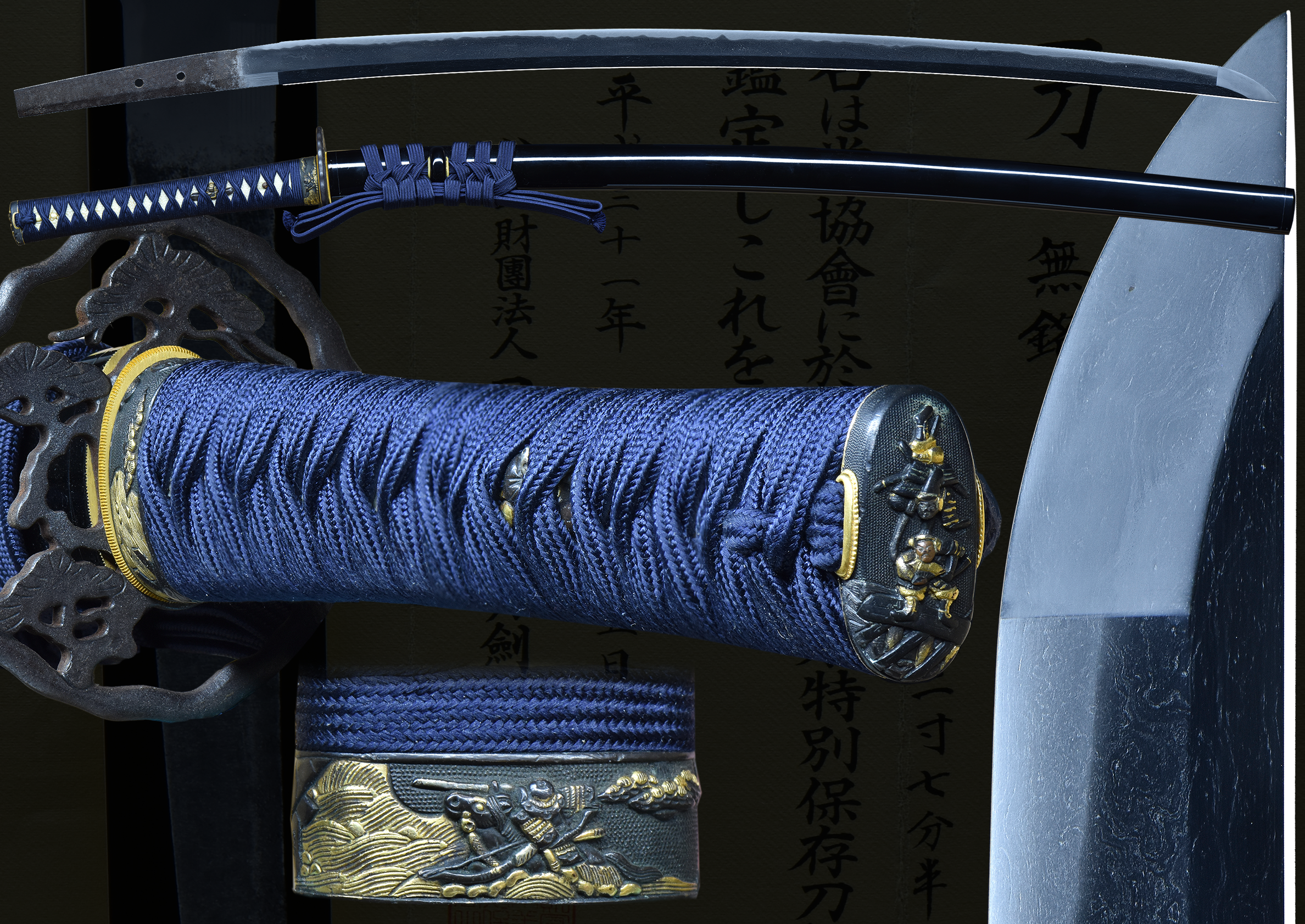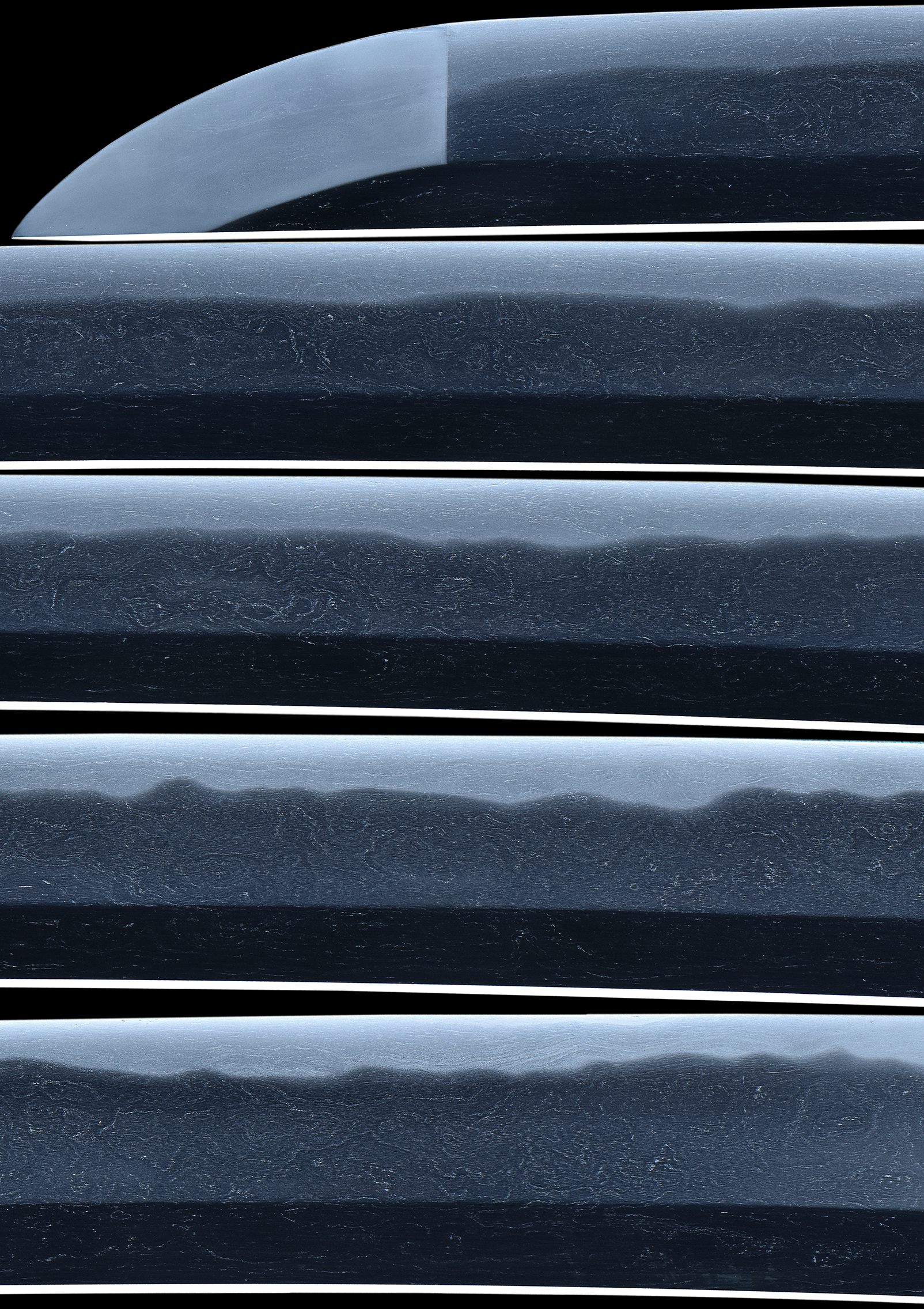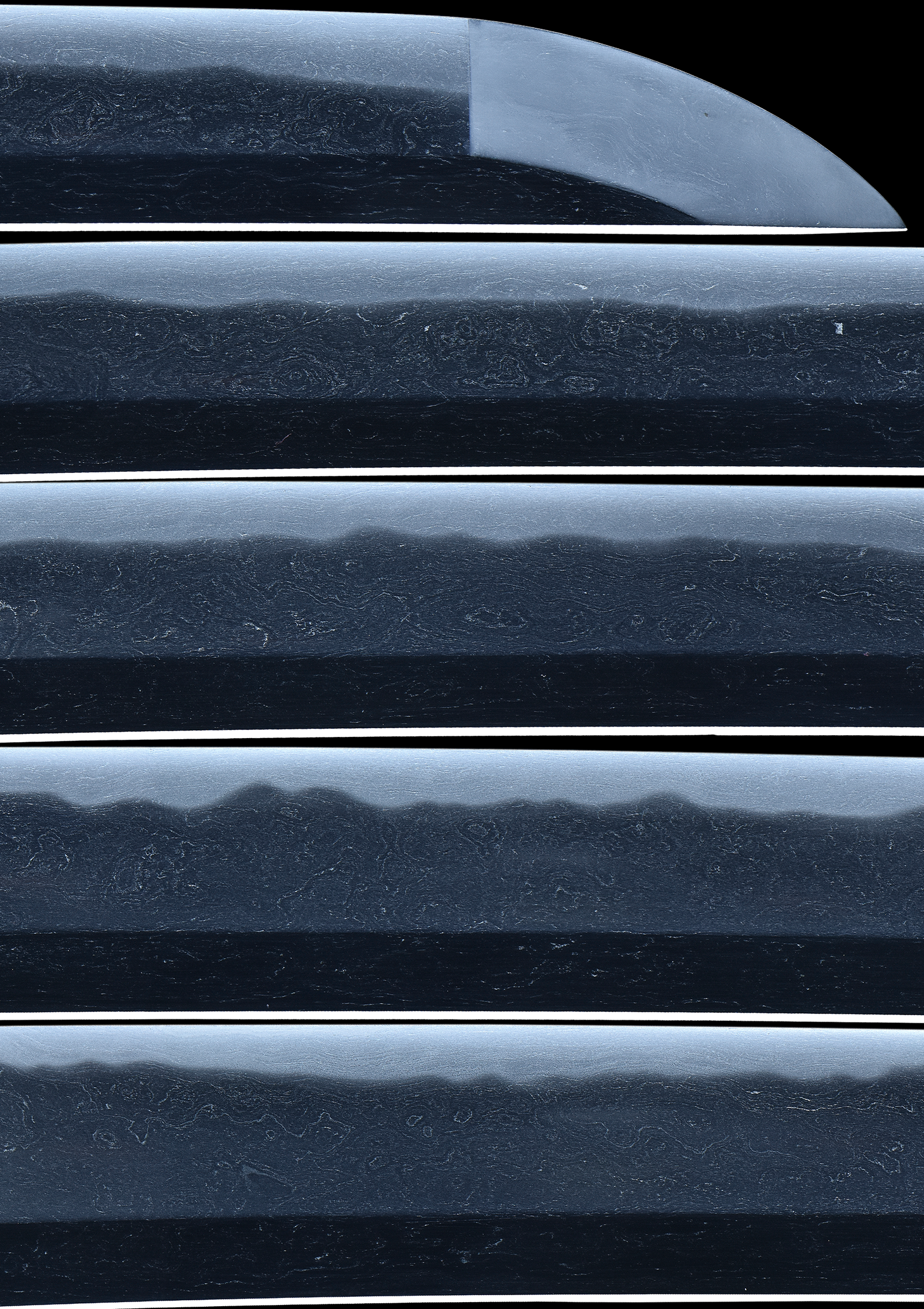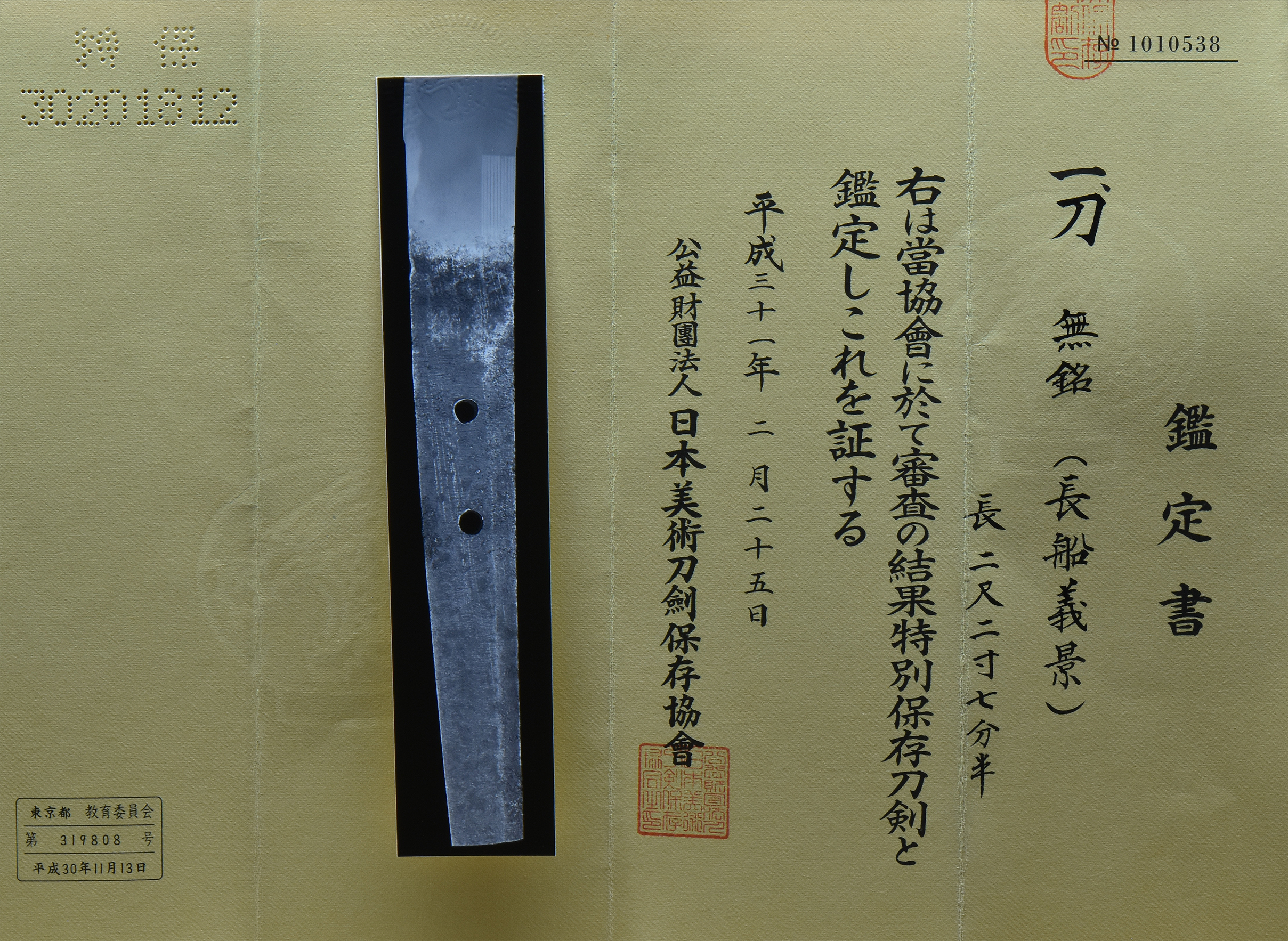This blade is a magnifiscent example of a fine Koto period piece made by Osafune Morikage. The hada is a beautiful swirling mix of itame and mokume loaded and covered in ji-nie. Chikei can be seen amongst the brilliant ji-nie covered hada. The hamon is covered in nie with lively streaks of sunagashi and kinsuji. The boshi is hakikake. The quality is very high on this sword and many of his swords have received Juyo papers. This sword has not been submitted yet to Juyo shinsa and is a good candidate. The koshirae is very imposingh. The saya is in a luxurious black lacquered finish. The fittings are various motif of samurai men. The tsuba is of an irregular shape in iron with a motif of pine trees. The tsuka ito is a rich blue color over a white same (rayskin). The sageo is a blue to match the ito. The seppa and habaki are gold washed.
This sword comes with TOKUBETSU HOZON papers from the NBTHK.
Information on school:
The founder of the Bizen Ômiya (備前大宮) School is generally thought to have been Kunimori (国盛). He was active around the Bun-ô (文應) era or 1260 during the Kamakura period. One theory says that he came from Inokuma Taigû a shrine in the Ômiya district of the Yamashiro Province, thus giving this school its name. Another theory says that he went to the Ômiya district of Bizen, hence the name Ômiya School. Whatever the reason, since works by the Kamakura smiths of this school are non-existent, the swords we today attribute to the Ômiya school date from the Nanbokucho era. Because they were made of exceptional length, most are mumei, ôsuriage today.
Kunimori (国盛) was followed by smiths such as Sukemori (助盛), Moritoshi (盛利), Morikage (盛景), Moritsugu (盛継), Morokage (師景), Morishige (盛重), Moritsune (盛恒), and others using the Moro (師) and Mori (盛) kanji characters. Most of the unsigned swords existing today that are generaly attributed to a specific smith (rather than just to Den Omiya) are attributed to Morishige (盛重), Morikage (盛景) and Morokage (師景).
Morikage (盛景) is said to have been the son of Ômiya Moritsugu (大宮盛次). He worked around the Enbun (延文) era or 1356. In the Meikan, Morikage’s (盛景) line is precisely recorded: the one who worked from Enbun (延文-1356) through Eiwa (水和-1375) is considered to be the shodai. The one who worked from Eitoku (水徳-1381) through Ko-ô (康應-1389) is said to be the nidai. Finally the one who worked from Meitoku (明徳-1390) through Ôei (應永-1394) is referred to as the sandai. Since there are only thirty-eight years in total encompassed between the beginning of Enbun (延文) and the beginning of Ôei (應永), and because the signature inscriptions throughout all these years are more or less uniform, a strong case for just one generation can be made. In fact, it is somewhat silly to attribute three generations in this short time span.
The works of Morikage (盛景) of the Ômiya (大宮) branch were largely similar to that of Kanemitsu (兼光) of the main line. Upon close comparison, however, one notices differences in overall quality, fineness of the jihada, prominence of the utsuri, etc. This closely parallels the relationship and differences in the works of Kagemitsu (景光) of the main line and Chikakage (近景) of the branch line of Bizen Den during the Kamakura era.
As a side note, we should note that there are signed examples where Morikage (盛景) signed with the long signature Bishû Osafune Morikage (備州長船盛景). The workmanship of these swords, especially the use of gyaku-tagane (reversed chisel strokes) show a closer relationship to the Osafune “branch” school of Chikakage (近景) and Yoshikage (義景). This would tend to indicate the possibility of a closer working relationship with the branch Osafune line than has been traditionally accepted.
We must also take into account that such smiths as Morikage (盛景) or Moritsugu (盛継) also left signed examples where they engraved their large sized signatures with a thick chisel to indeed be in Kunimori’s lineage, and to be the true smiths in the Ômiya School. Thus, a new explanation on these different smiths has been put forth, which, has forced a re-examination of the explanations that have existed up to now.
Morikage (盛景) left us many fine works including undated tachi probably from the Jôei (貞治) era 1362-1368 which has been designated to be a Jûyô Bunkazai. Another tachi dated Ôan hachi-nen go-gatsu hi (應安八年五月日) or 1375 has been designated a Jûyô Bijitsuhin
- Mei: Mumei
- Date: Enbun (延文) era or 1356
- Nagasa: 27-1/8 inches
- Sori: 18.0 mm
- Width at the ha-machi: 30.0 mm
- Width at the yokote: 21.9 mm
- Thickness at the mune-machi: 7.0 mm
- Construction: Shinogi zukuri
- Mune: Iori
- Nakago: Ubu
- Kitae: Itame/mokume
- Hamon: Midare Gunome
- Boshi: Hakake
- Condition: Great polish
(shipping and insurance included)
Email us if your interested in this item and remember to include the order number for this item: fss-901.
Click to Enlarge Image
Click to Enlarge Image
Click to Enlarge Image
NBTHK
TOKUBETSU HOZON
Maker:
OSAFUNE MORIKAGE
For Sale
